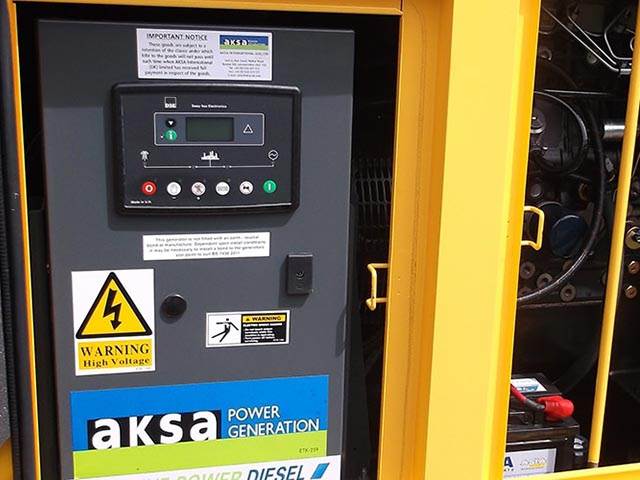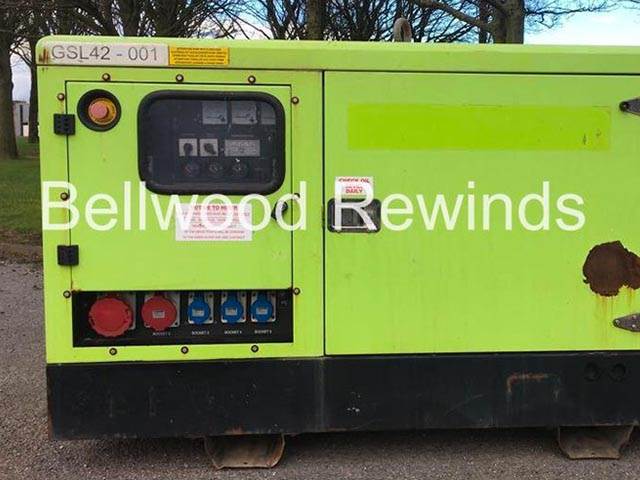- Contact 0870 350 7767
- |
- Advertise
Home > Bellwood Rewinds > How Do Diesel Generators Work?
How Do Diesel Generators Work?
 News and PR from Bellwood Rewinds - Published 02 August 2018
If you’re not familiar with diesel generators you may be wondering what they are and how they work.
News and PR from Bellwood Rewinds - Published 02 August 2018
If you’re not familiar with diesel generators you may be wondering what they are and how they work.
A diesel generator is the combination of a diesel engine and an alternator or electric generator which is used to generate electrical energy. The alternator is the generator which generates the electrical power, whereas the engine is used to rotate the electrical generator, however diesel generators are mostly used as an emergency power supply.
The Working Principle
Diesel generators work in four cycles:
Suction/ Intake
Compression
Power
Exhaust
The working principle of a diesel generator is based on the law of Energy conversion i.e. “Energy can neither be created nor be destroyed but be only converted from one form to another form.” Diesel has a chemical energy, during combustion the chemical energy is converted into heat and force. This force is known as mechanical energy which helps in rotating the alternator. The combustion is processed by a spontaneous ignition of the fuel when injected into a highly compressed charge of air which has reached around 750 degrees Celsius.
Suction Stroke
The piston moves from the centre due to the inlet valve opening, the air is then drawn into the cylinder. When enough air is drawn with pressure the suction valve gets closed at the end of the stroke.
Power Stroke
Fuel is inserted into the hot compressed air, it starts burning and then maintains the pressure, when the piston reaches the top centre the supply of fuel turns off. The injection of the fuel at the end of the compression stroke continues until the cut off point. The inlet and the exhaust valve remain closed and the hot gases and compressed air now expand in the cylinder which causes the piston to move down until it reaches the bottom dead centre.
Exhaust Stroke
During this stroke, the piston again moves up and allows the exhaust valve opens forcing the inlet and fuel valve to become closed. The burnt fuel gases escape due to their own expansion, the remaining gases are pushed out by the upward movement of the piston through the exhaust valve. When it comes to the end of this stroke, the exhaust valve closes, and the cycle is completed.
Diesel Generator Parts
Below are the following components of a diesel generator:
Engine
Alternator
Fuel System
Governor
Voltage Regulator
Cooling and Exhaust Systems
Lubrication System
Flywheel
Control Panel
Modern Diesel Generators are well set up with high specifications and come in various models, there are many companies that offer highly efficient diesel generators for sale in the UK. Here at Bellwood Rewinds we provide you with high quality diesel generators at an affordable price.
The Working Principle
Diesel generators work in four cycles:
Suction/ Intake
Compression
Power
Exhaust
The working principle of a diesel generator is based on the law of Energy conversion i.e. “Energy can neither be created nor be destroyed but be only converted from one form to another form.” Diesel has a chemical energy, during combustion the chemical energy is converted into heat and force. This force is known as mechanical energy which helps in rotating the alternator. The combustion is processed by a spontaneous ignition of the fuel when injected into a highly compressed charge of air which has reached around 750 degrees Celsius.
Suction Stroke
The piston moves from the centre due to the inlet valve opening, the air is then drawn into the cylinder. When enough air is drawn with pressure the suction valve gets closed at the end of the stroke.
Power Stroke
Fuel is inserted into the hot compressed air, it starts burning and then maintains the pressure, when the piston reaches the top centre the supply of fuel turns off. The injection of the fuel at the end of the compression stroke continues until the cut off point. The inlet and the exhaust valve remain closed and the hot gases and compressed air now expand in the cylinder which causes the piston to move down until it reaches the bottom dead centre.
Exhaust Stroke
During this stroke, the piston again moves up and allows the exhaust valve opens forcing the inlet and fuel valve to become closed. The burnt fuel gases escape due to their own expansion, the remaining gases are pushed out by the upward movement of the piston through the exhaust valve. When it comes to the end of this stroke, the exhaust valve closes, and the cycle is completed.
Diesel Generator Parts
Below are the following components of a diesel generator:
Engine
Alternator
Fuel System
Governor
Voltage Regulator
Cooling and Exhaust Systems
Lubrication System
Flywheel
Control Panel
Modern Diesel Generators are well set up with high specifications and come in various models, there are many companies that offer highly efficient diesel generators for sale in the UK. Here at Bellwood Rewinds we provide you with high quality diesel generators at an affordable price.
Other announcements from Bellwood Rewinds
-
Common Misunderstandings about Diesel Generators
There is a lot to learn about diesel generators based on their nature, uses, reliability etc.
02 Aug 2018
-
Buying a Used Generator
It can be costly buying a generator but buying a used generator can have several advantages.
02 Aug 2018





